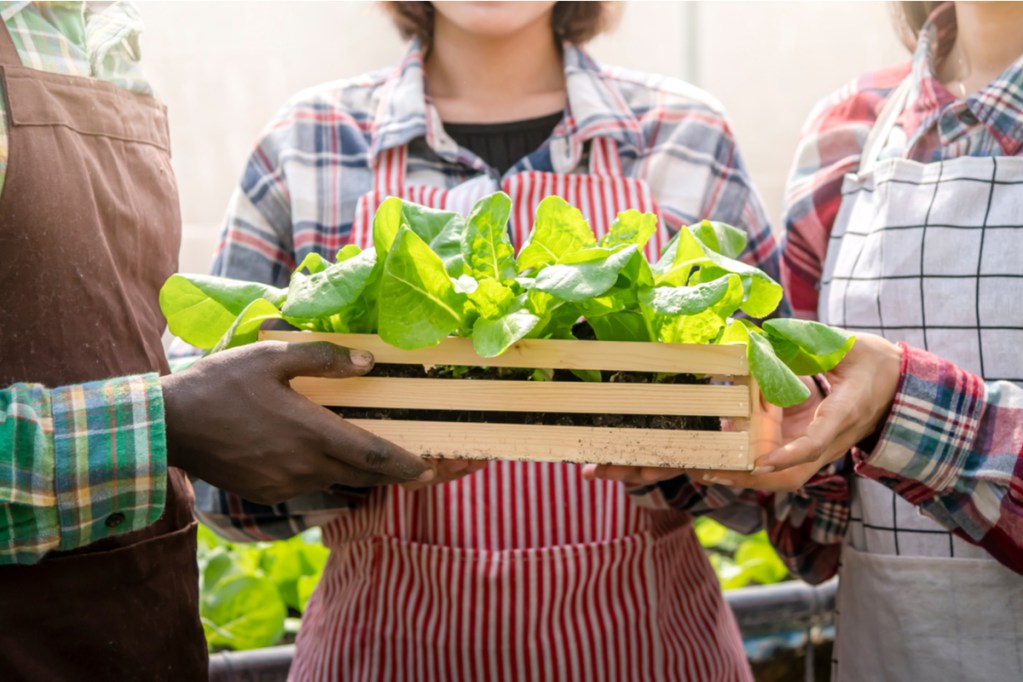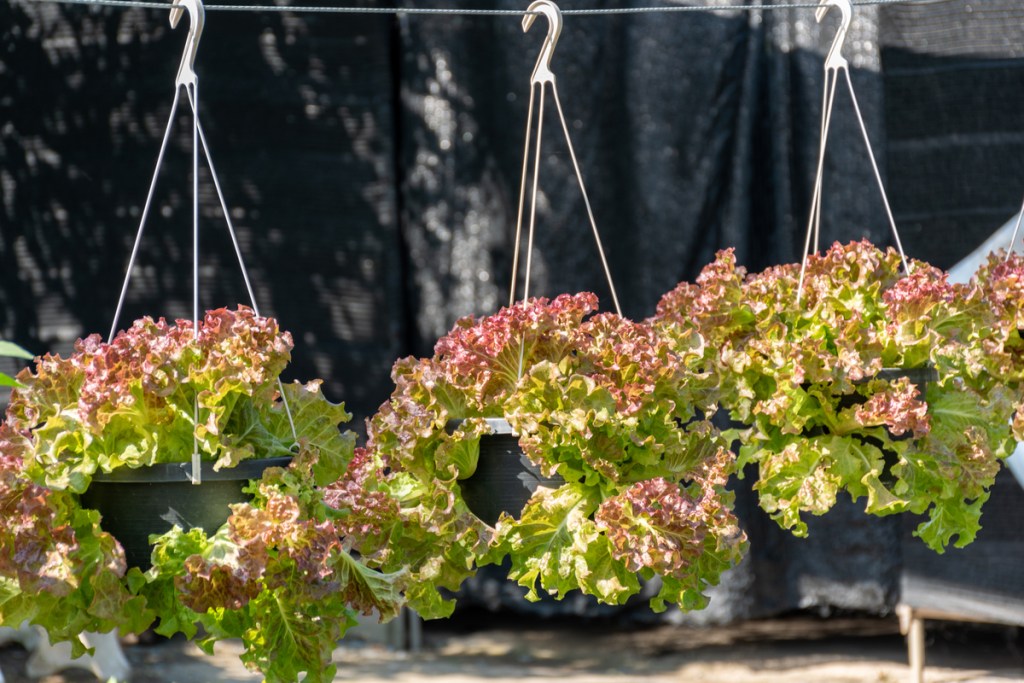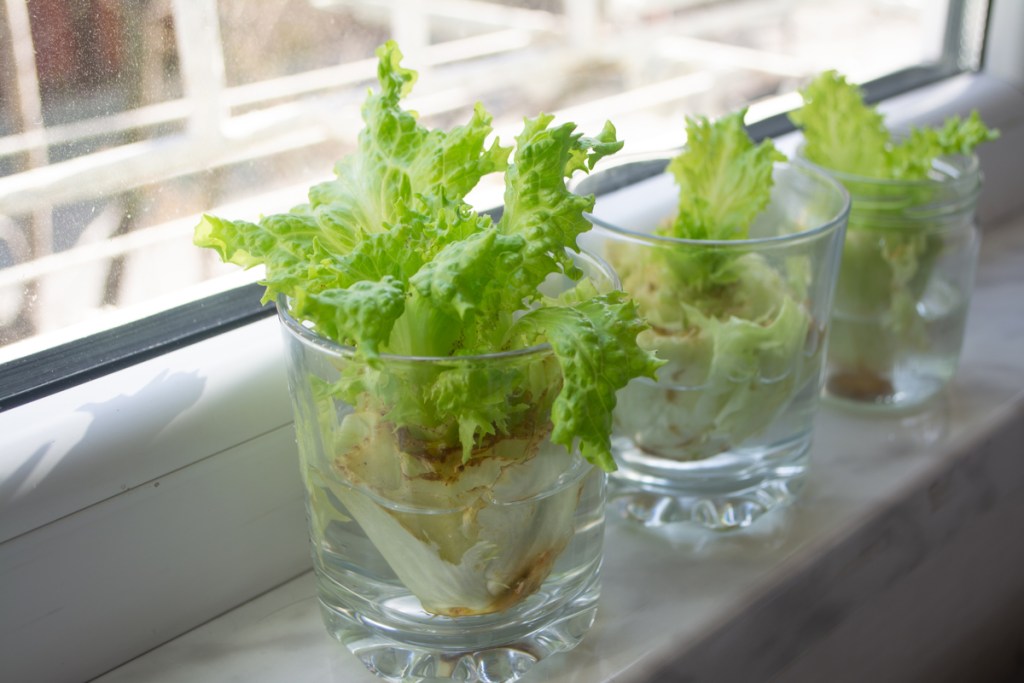Romaine lettuce is one of the most popular types of lettuce. It has a fresh flavor that’s not too bitter or too sweet, and it full of nutrients, making it a versatile vegetable. If you’ve been considering adding romaine to your garden, you might have wondered how easy it is to grow and harvest. Not to worry, we’ll answer all your romaine questions, from when to plant it to how to harvest it. We’ll even include some tips and tricks for propagating your romaine.

Planting romaine
Romaine is a quick growing plant, and the seeds and seedlings are surprisingly frost tolerant. This makes romaine a low risk, high reward plant for either your spring or fall vegetable gardens. Many nurseries and gardening stores carry romaine seedlings or starter plants. Starter plants can typically be planted as soon as you get them.
You can start romaine seeds indoors 10 to 15 weeks before the last frost, and transplant them into your garden four to six weeks after that. Starting seeds indoors isn’t typically done for fall gardens, but you might want to consider it if you live in an area that regularly sees late summer temperatures above 85 or 90 degrees Fahrenheit. Romaine thrives in mild temperatures and can become bitter and wilted when too hot.
Romaine seeds can also be sown directly into your garden, they just need to be started a bit later. Instead of 10 to 15 weeks, start outdoor seeds six to eight weeks, or about a month and a half to two months, before the last frost of the season. For fall gardens, start outdoor seeds in late summer, six to eight weeks before the first frost.
Romaine enjoys moist, thick, rich soil. Mixing compost into your soil is a great way to boost it and keep your lettuce happy. When planting romaine seeds, they need very little cover but plenty of space. In order to grow full heads, romaine needs to be spaced about 6 inches apart. You can either plant your seeds this far apart, or plant the seeds about an inch apart and thin them when they sprout. Since there’s no guarantee that every seed will sprout, the latter method is a good way to maximize crop size.

Caring for romaine
Romaine needs plenty of sun, but it tolerates some shade quite well, especially in hotter climates. In hot, dry climates, romaine will actually grow better with morning sun and afternoon shade. Since it’s more shade tolerant than many other vegetables, romaine is a great choice if you have a shadier section of your garden that other vegetables won’t grow in, or if you’re looking for a space filler between taller plants.
The main thing romaine needs is water. Water is what keeps lettuce leaves crunchy and delicious, which is why they wilt when dehydrated. Water is especially important in hotter, drier climates, but romaine in more mild climates, or climates with more regular rainfall, may need less water. Mulch helps slow evaporation, keeping water in the soil.
Romaine leaves are a target for rabbits, slugs, and aphids. Since the leaves are the part of the lettuce plant that we eat, spraying them with chemicals isn’t a great idea. Rabbits can be kept at bay with raised beds, a solid fence, or an owl-shaped scarecrow. Slugs can be contained using beer traps and copper tape, and aphids are easily controlled by ladybugs. Growing romaine in containers, especially hanging baskets, can also help alleviate pest problems.

How to harvest romaine
Romaine can be harvested in two ways. You can harvest only the leaves, or the whole head. Harvesting the leaves gives you more lettuce overall, but in smaller bursts. This is a great method if you want just a few leaves at a time for salads or sandwiches. Harvesting the whole head may result in less lettuce overall, but you get all of it at once. This method is better for larger meals. You can also harvest the leaves for a bit, then harvest the full head later, but the leaves will need time to recover.
Whichever method you choose, you’ll need a sharp garden knife or shears. To harvest the full head, make one cut at the base of the plant to remove it. You may need to hold the leaves up with one hand to get a good look at what you’re doing. When harvesting just the leaves, use the shears or knife to gently remove a leaf. The leaf doesn’t need to be fully grown, but should be at least a month old. Don’t cut the leaf all the way to the stem, both to avoid cutting the stem accidentally and to encourage a new leaf to grow in the same spot.
When you harvest the full head of romaine, save the bottom few inches of the stem. This can be placed in a half-inch of water and set in a sunny window. The stem will begin to regrow leaves, which can be harvested. It won’t produce a full head, and the leaves will be smaller, but they’ll taste just as good.
Romaine lettuce is a tasty, low-maintenance addition to any spring or fall vegetable garden. If you’re a fan of fresh, crunchy salads and flavorful sandwich ingredients, then try your hand at growing some romaine. Indoors or out, from seed or from seedling, romaine rarely disappoints. Just remember to keep an eye out for the rabbits, slugs, and aphids that enjoy romaine as much as we do!
Editors' Recommendations
- Everything you need to know about choosing the best rocks for landscaping
- Do you live in climate zone 2? Here’s what you need to know
- Do you live in climate zone 10? Here’s our guide to choosing the perfect climate zone 10 plants
- These are the 10 best gardening shows to stream right now
- Indoor gardening: Hydroponics growing tips for any plant



